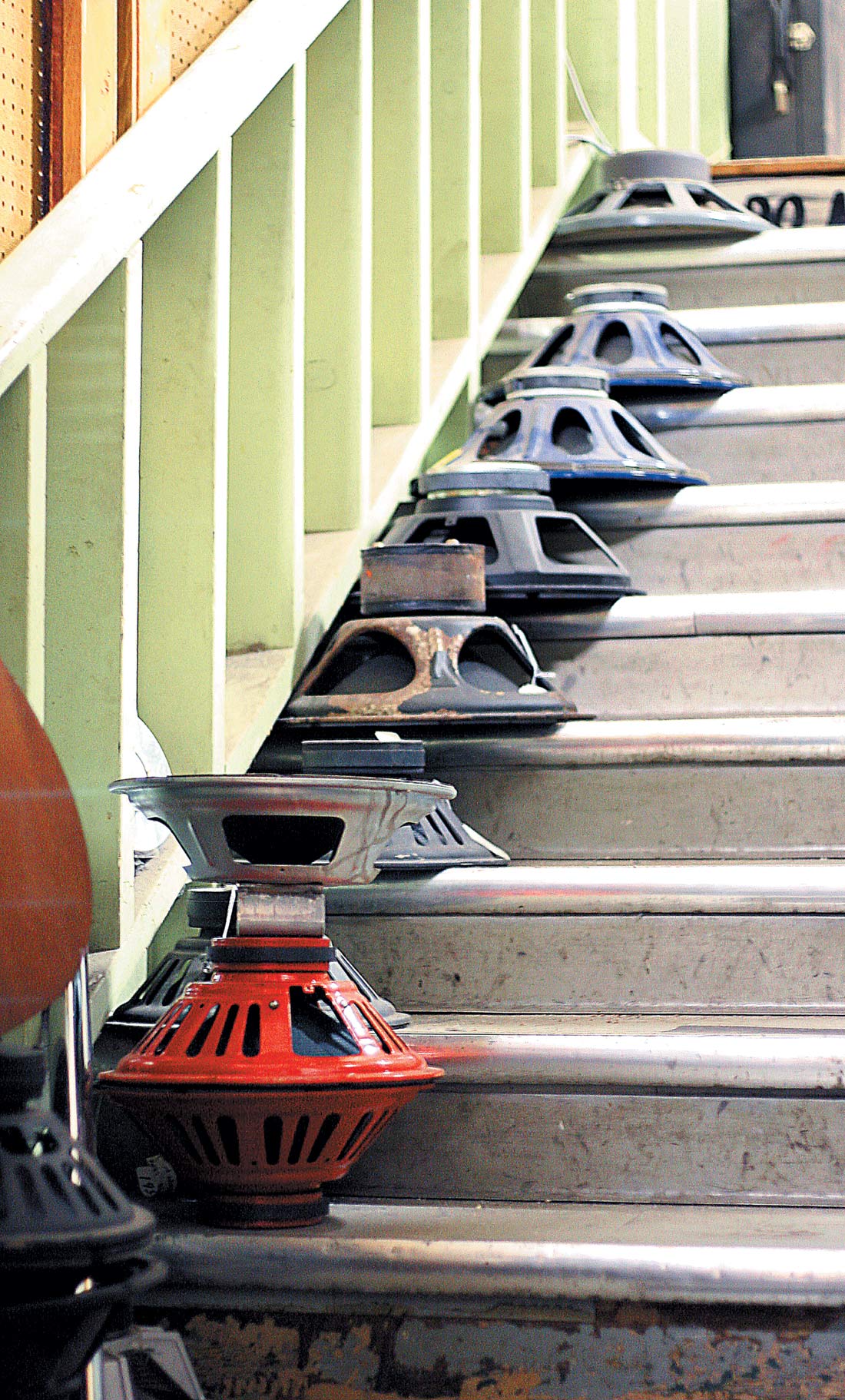In Tape Op #53, Jeff Elbel reviewed Auralex's SpaceArray
diffusor. The SpaceCoupler, also within the pArtScience family of Russ Berger-designed, affordable acoustic treatment, looks very much like the SpaceArray, except where the panels of varying depth would be, you have open space. The short tale of this design (and the very appropriate name for the product) is that Russ has been using a technique of "loosely coupling" spaces to make small rooms sound better. For those of you who missed Russ's very informative (and highly entertaining) presentation at TapeOpCon last year, here's my ultra-condensed explanation. In a typical small room, the walls reflect sounds with very little dispersion and delay. Therefore, what you hear in the room is not only the direct sound, but also a set of immediate reflections that cloud the original sound. By splitting the room into two air volumes separated by a controlled aperture, you can reduce the hazy sonics of the small room because some of the sound now travels through the aperture, bounces around in the secondary space, and returns to the primary space through the aperture with much greater dispersion. And that's the original function of the SpaceCoupler-an aperture between two spaces. But the SpaceCoupler is even cooler than that, because it has a variety of other very effective uses. Sure you can use it to focus sound between two volumes of air, but what about focusing sound into material? Turns out that a SpaceCoupler in front of an absorber panel increases absorption at some frequencies and angles while scattering at others. To test this theory out, I covered the RealTraps MondoTraps (Tape Op #48) directly above and behind my control room's "producer's couch" with SpaceCouplers. Because this rear wall is too close to the ears of those sitting on the couch, a standard quadratic-residue diffuser would not be recommended. Although the effect of the SpaceCouplers was initially subtle, it soon became obvious that the midrange was clearer not only due to greater absorption at acute angles, but also to scattering of reflections coming from the angled ceiling above the couch. But the real reason I wanted the SpaceCouplers was to provide movable treatment for the glass between control room and live room. This glass is midway along the side wall of the control room, and for anyone sitting at the rear of the room, the window (along with the wall opposite it) is a strong reflector. Unfortunately, that window is the only natural light into the control room. (The live room is bathed in natural light.) Therefore, I was reluctant to cover it, even when the live room wasn't in use. But an array of SpaceCouplers (clipped together with small binder clips, as the guys at Auralex demoed at TapeOpCon) hung from the window frame not only allows natural light to enter from the window, but it does a fantastic job of scattering any sound that hits the window at an acute angle, including sound from the main monitors. Cool! Much better imaging and detail for everyone on the couch. And as an additional benefit, better imaging for the engineer at mix position too as there are less second and third-order reflections now. I also tried hanging a SpaceCoupler array (again, binder-clipped) on wire strung above the drum riser in the live room. By angling the array, I was able to focus and scatter the reflections coming off the ceiling. My Royer SF-12 stereo ribbon, with its clover-leaf pickup pattern prone to catching reflections from the ceiling, never sounded better as an overhead. I'm sold on the SpaceCoupler concept and its many applications! Anyway, I'm out of space, so I won't talk about how I want to use SpaceCouplers in my restaurant to focus ceiling reflections for a more intimate dining experience-a suggestion from Russ (whom I hear is a fantastic chef himself). Handmade from Paulownia wood and looking quite handsome, I wouldn't hesitate to put these in the dining room of my New England bistro.
($299 MSRP each; www.auralex.com)
Tape Op is a bi-monthly magazine devoted to the art of record making.




_disp_horizontal_bw.jpg)